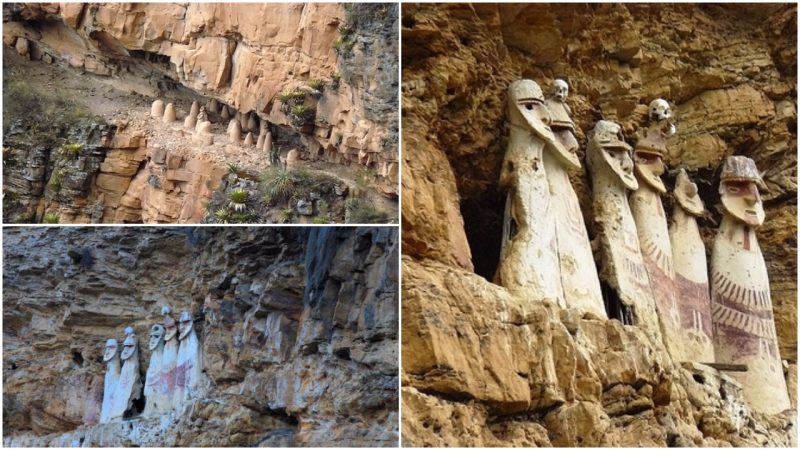In the north of Peru, just before the “gates” of Amazonia, there is the wonderful city of Chachapoyas. It is an isolated city and the capital of the Amazonas Region.
In a radius of 62 miles (100 km) of Chachapoyas, there are astonishing historical sites and monuments constructed before and after the Inca’s conquest of the Chachapoya. Following the Inca’s trail is a journey through the history of South America and one of the most beautiful sights on it is the Karajia archeological site.
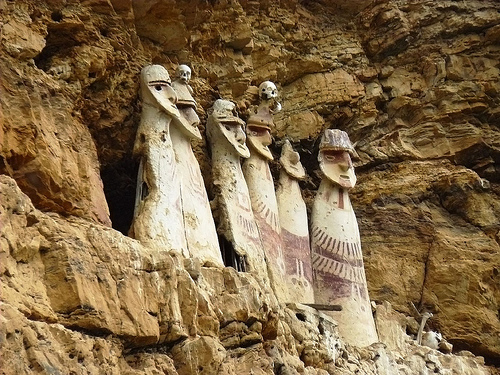
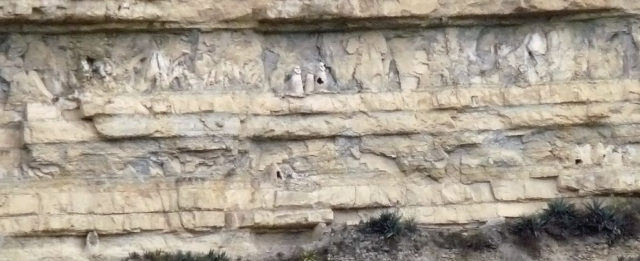
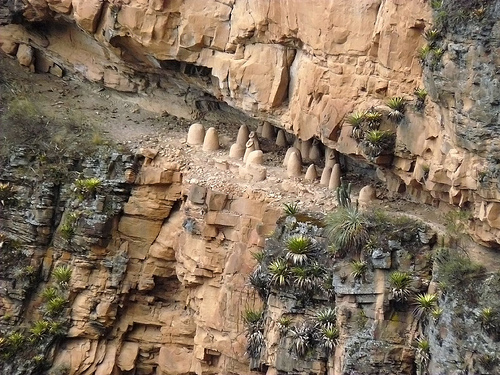
The site is located 60 km northeast of Chachapoyas on 6798 miles (2072 meters) altitude. Unreachable, high above the path in the limestone cliff, are the funeral tombs of the “ancient wise men.”
The seven 8.2 feet (2.5 meters) tall sarcophaguses are construed of clay, sticks, and grass, and carved in stone. They resemble six limbless torsos, with large heads and exaggerated jawlines. Even though the remote location has preserved them from destruction, in 1928, one of the original eight sarcophaguses was destroyed due to an earthquake.
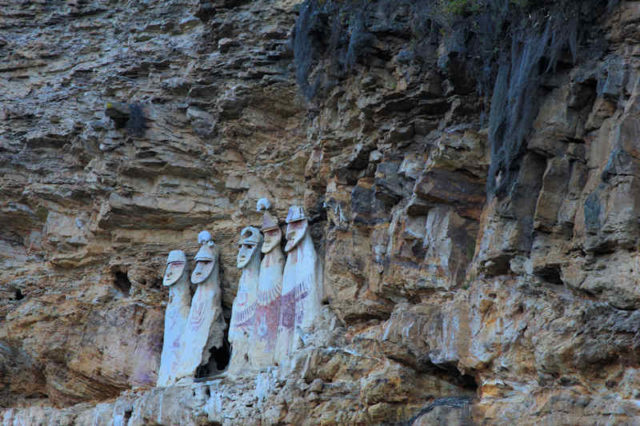
According to the radiocarbon, the sarcophagi dated to the 15th century were carved by the Chachapoya people (also called “Warriors of the Clouds”) just before the Inca empire conquered their civilization in the 1470s. The Chachapoya mummified important individuals of their civilization in the sarcophagi which were called “purunmachus.”
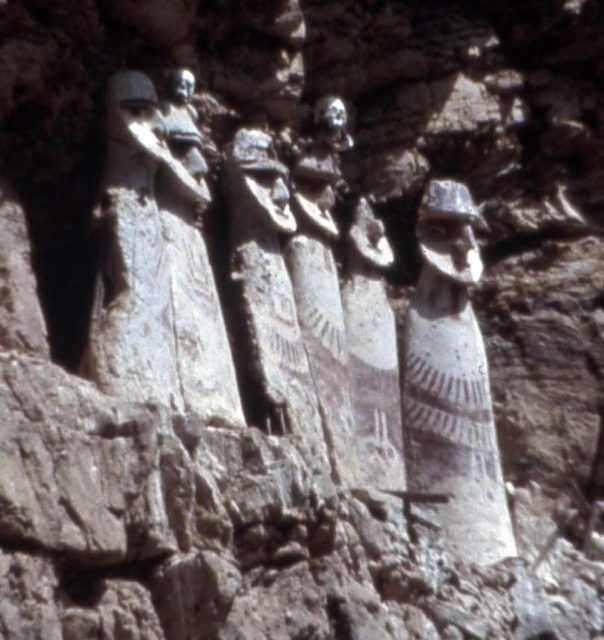
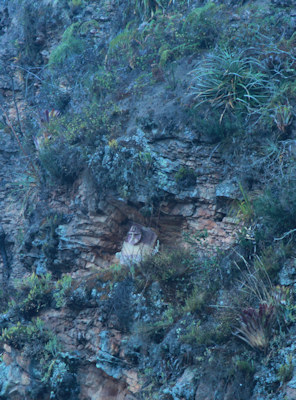
The sarcophaguses are painted white and overlaid with feathered tunics and male genitalia which displays the gender of the deceased, in yellow ochre and two red pigments.
Some of the headpieces are adorned with horns which resemble deer antlers. These “purunmachos” are unique because of the human skulls which are atop on some of the heads.
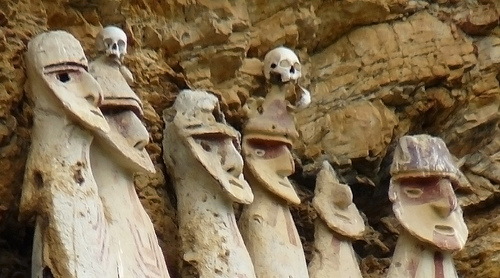
The “Purunmachos,” as the local people call the sarcophaguses, were discovered in 1984 by the Peruvian archaeologist Federico Kauffmann Doig.
He found and approached them with an assistance of a team, and later exposed them to the world. According to his studies of the “purunmachos,” the deceased were placed in a fetal position and wrapped in a cocoon of wild cane stalks tied up with twine. The heads had been sculpted afterward and then placed on top of the “bodies.” Along with Kauffmann, there are only a few other archaeologists and TV crews that managed to reach the sarcophaguses.
